Cu Chi Tunnels

|
Cu Chi
Tunnels
  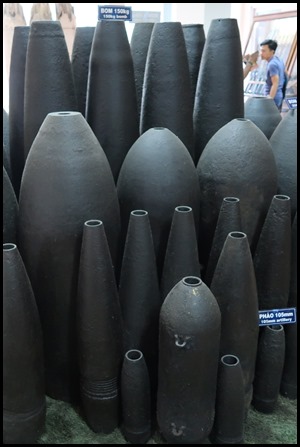 After lunch and actually only thirty
miles from Ho Chi Minh City, one minute I was taking Bear’s picture with a sax playing Santa, admiring the little dangling chap, than we were through the entrance and
looking at ordnance.
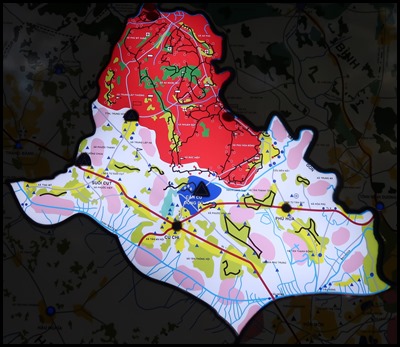 Map showing Saigon. Vietnam was split in
two (about half way) on the 17th Parallel, Hanoi in the north and Saigon in the
south. In order to combat better-supplied American and South Vietnamese forces
during the Vietnam War, Communist guerrilla troops known as Viet Cong (VC – red
area) dug tens of thousands of miles of tunnels, including an extensive network
running underneath the Cu Chi district northwest of Saigon. Soldiers used these
underground routes to house troops, transport communications and supplies, lay
booby traps and mount surprise attacks, after which they could disappear
underground to safety, for days, weeks or even longer. To combat these guerrilla
tactics, U.S. and South Vietnamese forces trained soldiers known as “tunnel
rats” to navigate the tunnels in order to detect booby traps and enemy troop
presence. Now part of a Vietnam War memorial park in Ho Chi Minh City (formerly
Saigon), the Cu Chi tunnels have become a popular tourist
attraction.
 Map showing tunnels. The Cu Chi Tunnels
stretched for miles on three levels.Store
rooms, family rooms, kitchens, access to the river, wells and booby
traps.
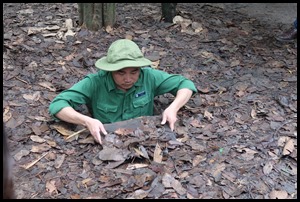 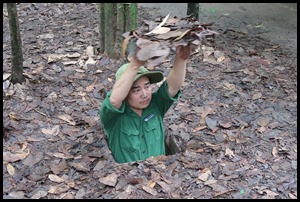 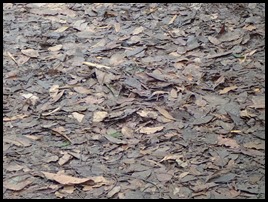 We followed our guide up a wooded
track and one of the men who work on the site leapt down a
hole, loaded leaves on his lid, raised his
arms and bobbed down. When the tiny lid was in place the tunnel entrance utterly disappeared. A
broken leaf, folded once gave the warning ‘be careful’, two folds confirmed
‘enemy nearby’.
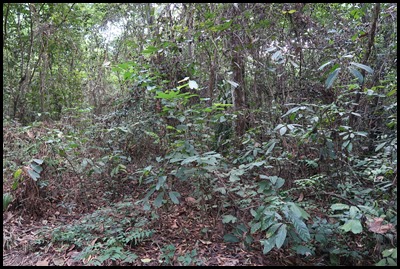 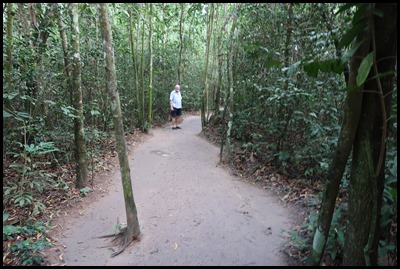 The terrain looks impenetrable, Bear on one
of the tracks, simply to get very lost.
 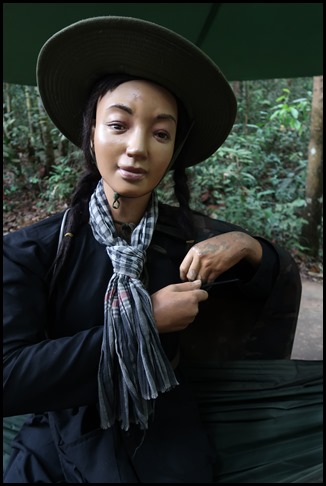 Men wore green, women wore black
and always wore a scarf. Many US servicemen who managed to crawl in the
tunnels were killed because of their smelly boots. In the pitch dark the
Vietnamese only wore sandals, US soldiers through constant wet / dry conditions
wore boots that began to smell or squeak. The most cunning trick employed by the
Vietnamese was wearing one shoe forwards and one back.
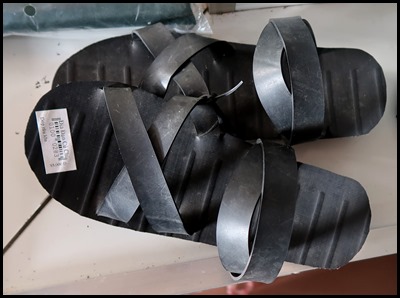 Their simple sandals, made from tyre rubber had two sets of
crossed over straps, the foot shape was correct but worn to leave footprints to
confuse trackers. They now sell for three pounds a pair to
tourists.
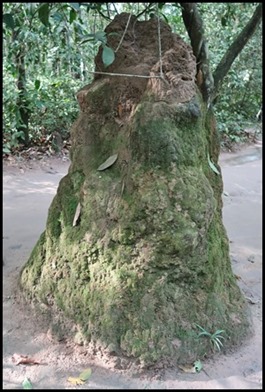 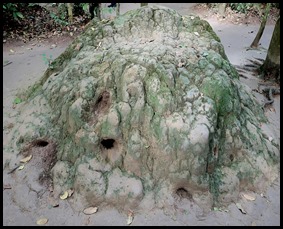  The clay soil was easy to dig out,
simple to support and made fine ‘termite’ mounds
which were in fact, ventilation shaft covers. Our
guide introduced us to the toxic cu chi tree used to
tip punji sticks or stakes in booby traps. Other ingredients were king cobra and
scorpion venom.
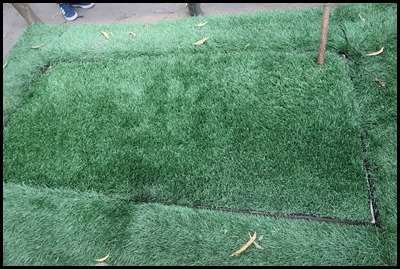 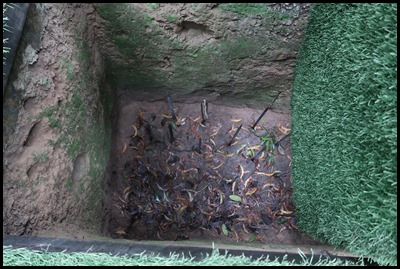 The first booby trap we saw was a
lethal one, a revolving door spun on its hinge
dropping the soldier down onto long spikes with no
chance of escape.
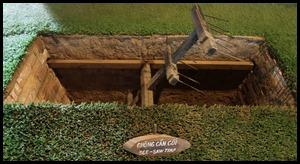 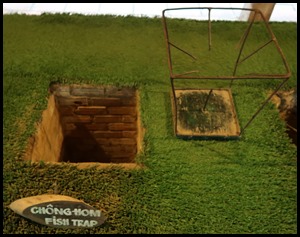 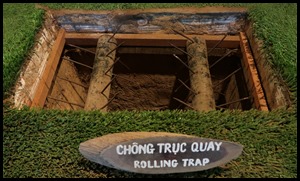 The see-saw
trap, the fish trap and the rolling trap.
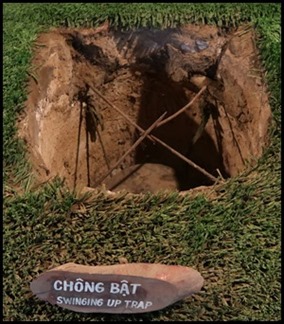 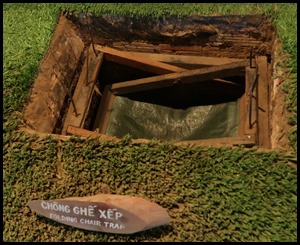 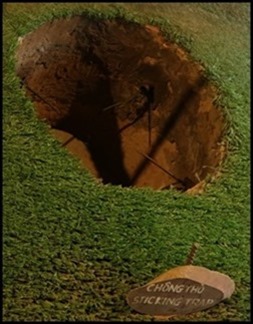 The swinging up
trap, the folding chair trap and the sticking trap.
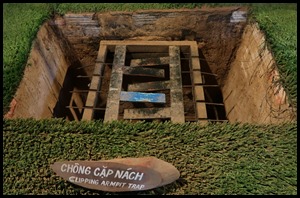 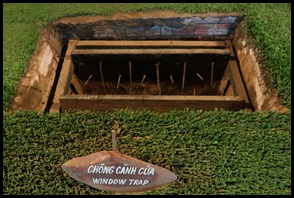 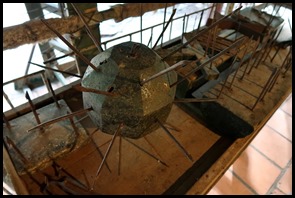 The clipping
armpit trap, the window trap and some baddies. If servicemen were not killed instantly and lay
screaming in the traps, their rescuers were quickly despatched.
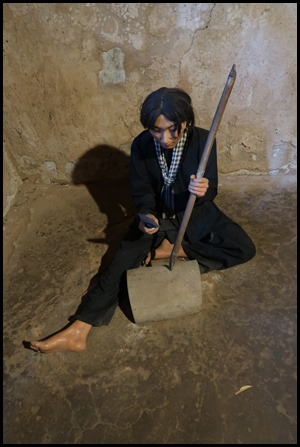 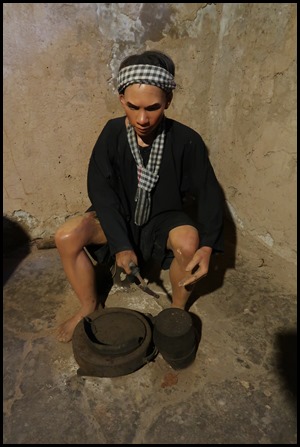 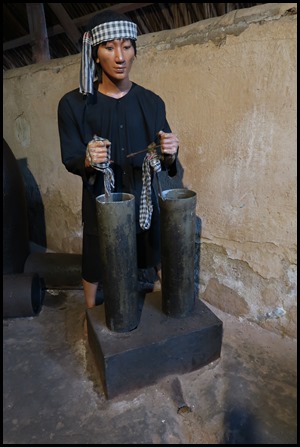 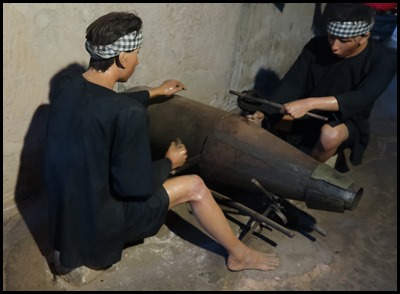 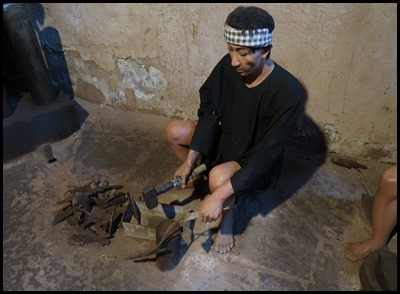 Perhaps even more ingenious was the
dragging away of unexploded bombs to underground
workshops to be redesigned to make anti-personnel booby traps.
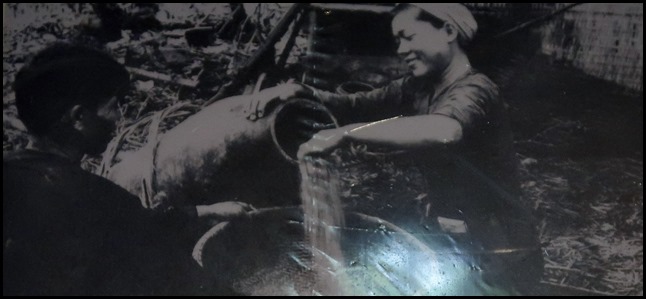 A 1966 photograph of a Cu Chi lady
scooping gunpowder into a basket.
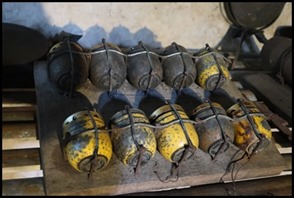 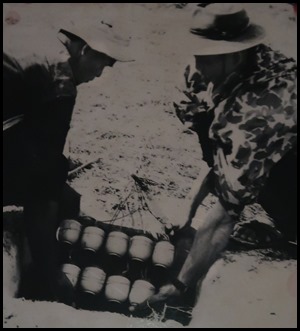 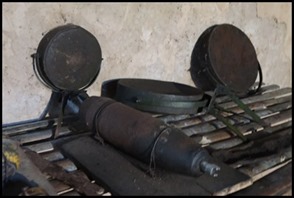 Very impressive were the salvaged bombs. They made pressure
pads, (an actual photograph of one being
laid), grenades and weapons designed to cut and
maim.
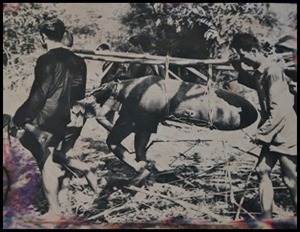 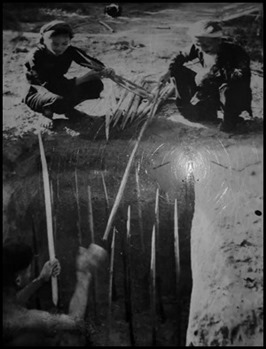 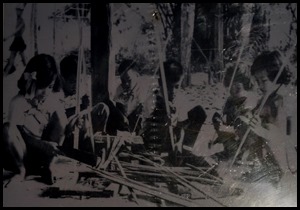 Men carrying an
unexploded bomb. A man a woman and an elderly man placing spikes into a trap to protect a nearby village.
Children help their parents to whittle and pitch
bamboo spikes.
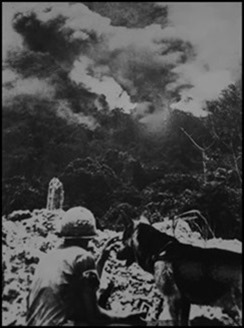 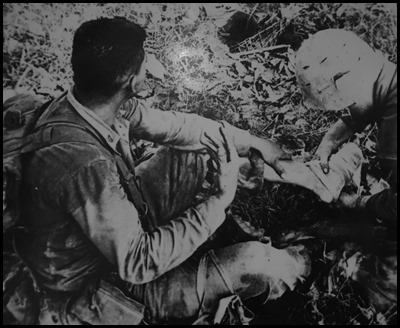 American soldiers
used dogs to try and find the tunnels. A wounded
foot being tended to.
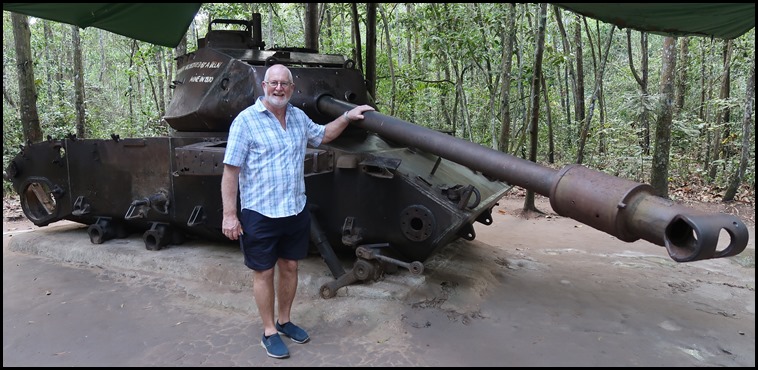 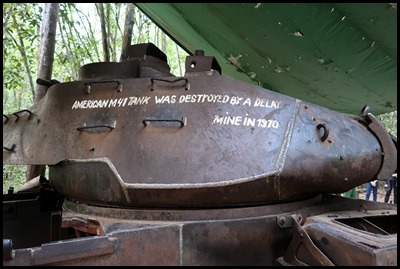 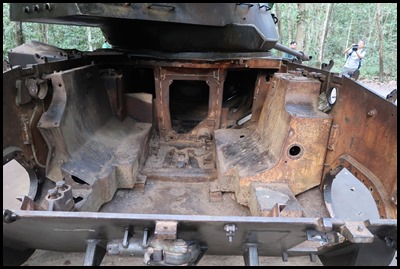 An M41 tank that
died by a delay bomb in 1970.
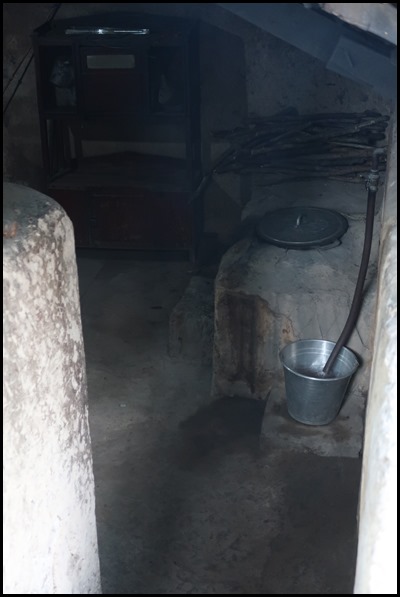 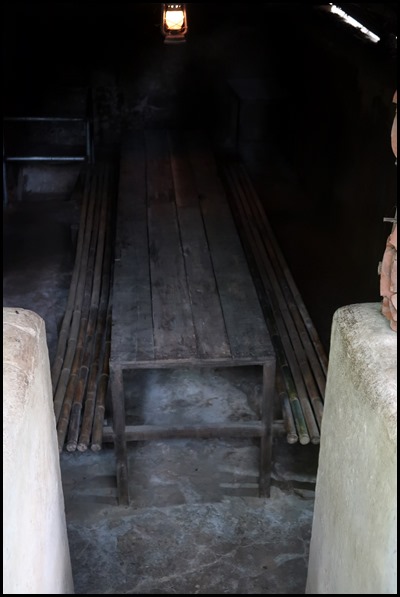 A kitchen
and a canteen.
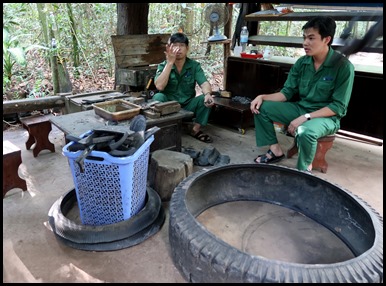 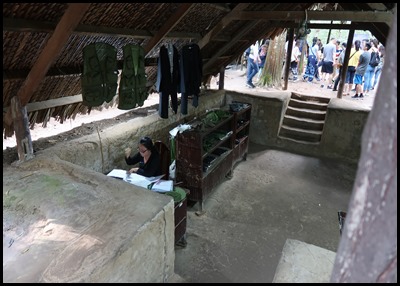 A workshop making
sandals from tyres. A lady making
Vietnamese war outfits.
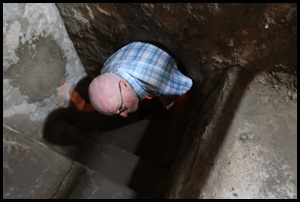 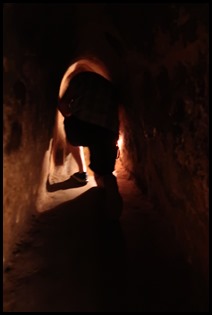 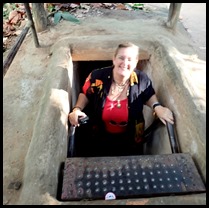 Following
Bear down one of the tunnels, he had to go on
his hands and knees, I could just manage to crouch and stumble – but it was
incredibly difficult progress, very airless and stuffy. Out
I pop.
Vietnam War Statistics is the longest war in US history (11 years). "War" was never officially declared by the United States. A Cornell University study placed the over-all total U.S. cost of the Vietnam war at $200 Billion. Total U.S. bomb tonnage dropped during: World War II = 2,057,244 tons Vietnam War = 7,078,032 tons (3-1/2 times WWII tonnage). Bomb tonnage dropped during the Vietnam War amounted to 1,000 lbs. for every man, woman and child in Vietnam. An estimated 3 million people were killed by the war, and over 1 million were wounded. An estimated 70,000 draft evaders and "dodgers" were living in Canada by 1972. Famous draft-dodger, Muhammad Ali declared that he had no problem with the people of Vietnam, stating that, “No VietCong Ever Called Me Nigger”. ALL IN ALL SIMPLE, INGENIOUS,
CUNNING AND CLEVER
STARTLING INSIGHT INTO WHAT IT WAS
LIKE |